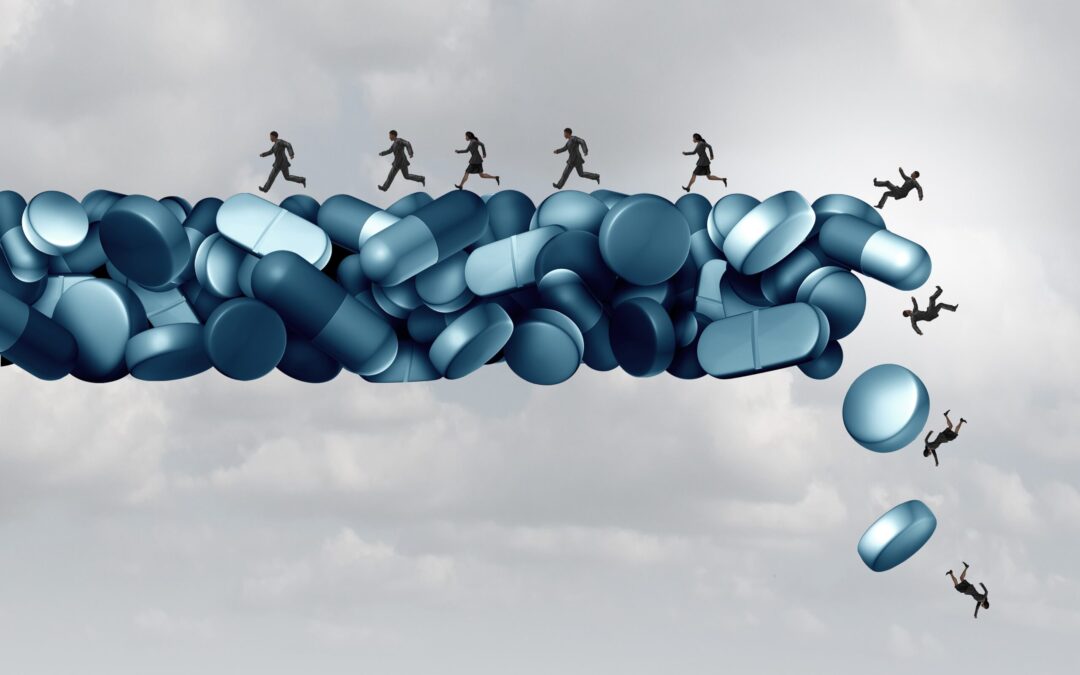Fentanyl addiction has caused major chaos around the United States and in the midst of an opioid crisis – causing people to seek help from a number of treatment options. The issue at hand is opioid use disorder, which is a medical condition that happens when the use of prescription opioids and or illegal opioids gets out of hand. Addiction stands at all crossroads for those suffering from opioid use disorder and being that opioids are highly potent, that makes opioid use disorder that much more difficult to overcome. According to the CDC the synthetic opioid, fentanyl is estimated to be 100 times stronger than morphine and 50 times stronger than heroin. As fentanyl is being abused as a recreational drug, the addiction associated with it is overwhelmingly challenging, with many losing their battle to it resulting in an unprecedented number of overdose deaths.
What treatment options are there for opioid use disorder and Fentanyl Addiction?
An opioid addiction and Fentanyl addiction are both a black hole of madness and many have to commit to treatment in order to recover. The treatment path is dependent on the severity of the addiction of each individual. Understanding the severity means understanding the effect that fentanyl has on the brain. Like all opioids, fentanyl changes the chemistry in the brain and actually binds to opioid receptors. This can be powerfully pain-relieving as it works to block pain signals to the spinal cord and brain while also releasing dopamine, the neurotransmitter that is responsible for pleasure and reward. The result for the user is a tremendous feeling of euphoria … and there enters fentanyl addiction. The following treatment options are often used to treat the deadly addiction:
- Medical detox: Medical detox is often the first step, no matter which treatment an addict is seeking. Medical detox involves a medically supervised withdrawal process, often in an inpatient setting, with the use of medications to manage withdrawal symptoms and reduce cravings.
- Behavioral and group therapies: Therapies are a common treatment option as they help change thinking patterns that are associated with addiction. Contingency management (CM) and Cognitive-behavioral therapy (CBT) can help users work through the issues that lead them to addiction in the first place and establish coping mechanisms for when temptations occur, preventing relapse. There are also support groups like Narcotics Anonymous (NA), that also aid with ongoing peer support within their community.
- Outpatient or residential treatment: The outpatient option allows drug users to receive treatment within their home while the residential treatment option occurs in a treatment center where the user will stay for a period of time.
- Medication-Assisted Treatment (MAT): One of the most controversial treatments is MAT which involves using medications aligned with therapies and counseling to tackle opioid use. This is a full circle type of approach which is often needed when combating opioid use disorder. The Food and Drug Administration (FDA) has approved three medications used in MAT, which are naltrexone, buprenorphine, and methadone. The use of these medications is implemented to help manage withdrawal symptoms and cravings, making it easier for the drug user to manage their addiction and start on a path of steady recovery.
What to Know About MAT (Medication-Assisted Treatment)
Many addiction experts consider MAT and the use of buprenorphine particularly helpful for treating those with opioid dependency – some even labeling it as the gold standard of treatment options. According to a recent report from NPR, a study conducted in 2021 saw overdose risks cut in half with the implementation of buprenorphine; however, another survey found only 22% of those suffering with opioid use disorder accessed Medication Assisted Treatment that used buprenorphine and methadone. Although both methadone and buprenorphine are opioids, they are much weaker than the deadly opioids out there like fentanyl and really can be a game changer for patients seeking treatment.
Study after study have shown MAT to be effective in improving health, reducing harmful opioid intake, and a decreased risk of overdose or overdose deaths. So what gives? Why aren’t more people accessing MAT? For starters, there is stigma and discrimination around addiction for the drug user and even in some healthcare realms. The Drug Enforcement Agency (DEA) recently lifted the “x-waiver,” which put an “x” in front of registration numbers for any prescribing clinician of MAT. For those in healthcare, it was thought that this “x” possibly made them a target for audits. Fast forward to those out there needing MAT, if there is a limited amount of clinician adoption then there is limited access to the treatment. Providers were also capped on how many patients they could care for. Stigma surrounding OUD often stems from misunderstandings about the nature of addiction. Some people view addiction as a moral failing or a choice, rather than a medical condition. This can lead to blame and shame directed towards individuals with OUD, making it difficult for them to access healthcare, housing, employment, and other services.
There isn’t a one size fits all treatment for opioid use disorder however, there are promising treatments out there like MAT. This type of treatment is calling for a shift in mindset from our leaders to our streets about what addiction really is and how to help the person fighting the addiction. Alive is better than dead – period.
Our team at Scottsdale Recovery and Detox Center® is committed to serving our community as well as those nationwide. For over a decade we have remained Arizona’s premier addiction center. By providing a vast array of services we recognize not two people are exactly the same and neither are their addictions. We want our clients, community, and those who are struggling to have access to support in all forms.
We are a phone call away if you or a loved one are seeking support! Learn more by visiting scottsdalerecovery.com or call 1-888-NODRUGS.

